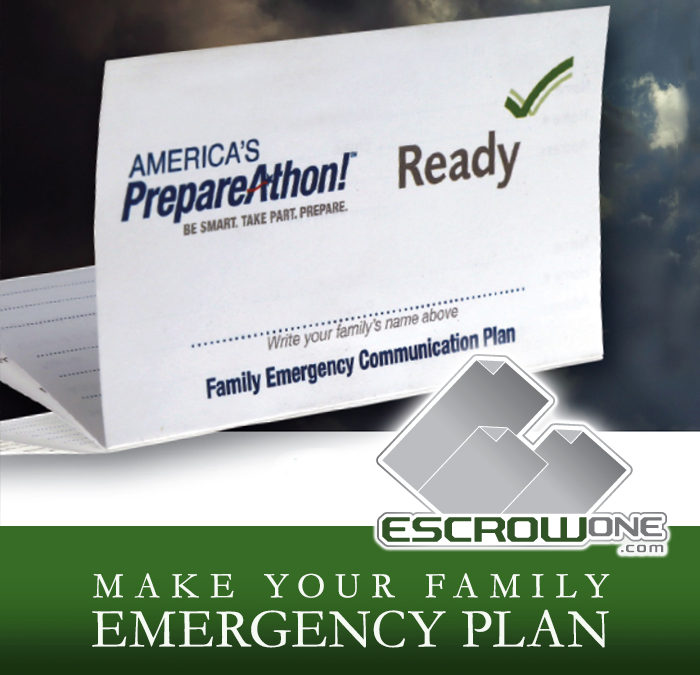EscrowOne wants to keep you and your home safe – Prepare. Plan. Stay Informed.
Be “In the Know” with these guidelines for protecting your family and your property as best you can.
Address Your Homes Vulnerabilities
Homeowners often feel helpless against destructive weather. But there are storm-specific home improvement strategies that can lower the risk of your home being damaged. In the case of hurricanes, for instance, you can mount storm shutters, build a safe room or install hurricane straps to help keep your roof in place when fierce winds blow. In many instances preparing against one threat can protect you from others as well. Below are some examples of things you can do to protect your home.
- Ensure that both the new roof covering and the sheathing it attaches to will be resist to high winds.
- Secure large objects like bookcases and refrigerators to floor or walls.
- Turn off utilities, propane tanks, and unplug small appliances.
- Check your sump pump to make sure it is in proper working order.
- Install impact resistant window systems or shutters that close over window openings.
- Clean out gutters and downspouts.
- Trim back trees and shrubs.
- Fuel and maintain family vehicles
- Entry doors should have at least three hinges and a bolt security lock at least one inch long.
- Buy non-perishable food and bottled water.
Make a Disaster Preparedness Plan
Everyone needs to be prepared for the unexpected. You, as well as your family and friends, will most likely not be together when disaster strikes. How will you find each other? Will you know if your children or parents are safe? You may have to evacuate or be confined to your home. What will you do if water, gas. electricity or phone services are shut off?
- Gather information about hazards.
- Meet with your family to create an emergency plan.
- Implement your plan.
- Practice and maintain your plan.
Build a Disaster Supply Kit
A disaster supplies kit is simply a collection of basic items your household may need in the event of an emergency. Try to assemble your kit well in advance of an emergency. You may have to evacuate at a moment’s notice and take essentials with you. You will probably not have time to search for the supplies you need or shop for them.
The Basics
- Water
- Non-perishable food
- Battery-powered or hand-crank radio
- Flashlight
- Extra Batteries
- First aid kit
- Whistle
- Dust mask
- Moist towelettes
- Garbage bags
- Wrench or pliers
- Can opener
- Local maps
- Cell phone with charger
Additional Items
- Prescription medication
- Infant formula and diapers
- Pet food and water
- Important family documents
- Cash, traveler’s checks and change
- Emergency reference information
- Sleeping bags and blankets
- Fire extinguisher
- Waterproof matches
- Mess kits
- Toiletries
- Activities for kids
Check out the PDF link below for MANY ideas on how to prepare for any emergency…
PREPARE FOR AN EMERGENCY – PDF
Visit www.ready.gov/make-a-

